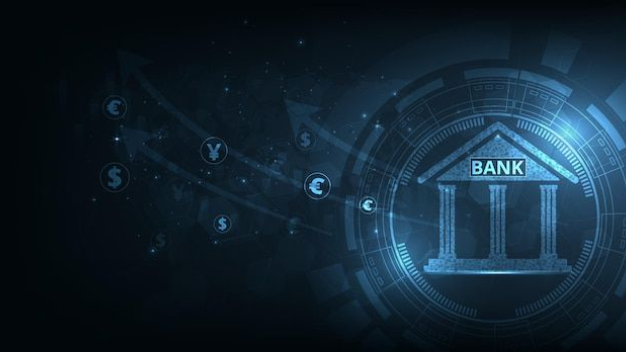Securing Our Digital Future

Safeguarding Tomorrow’s Digital Landscape
In the modern world, our lives are deeply intertwined with technology. From online banking and social media to smart homes and autonomous vehicles, digital systems have become the backbone of society. This pervasive connectivity, while offering unprecedented convenience, has also created a new frontier of vulnerability. Cyber threats are no longer abstract concepts; they are a daily reality for individuals, businesses, and governments alike. Protecting ourselves in this intricate web of data and devices is not just a matter of convenience; it’s a critical challenge for our collective security and prosperity. Securing our digital future is a proactive and ongoing effort, a race against evolving threats that requires a fundamental shift in our mindset and our approach to technology.
This effort is a collaborative one, involving everyone from cybersecurity experts and technology developers to everyday users. It’s about building a digital ecosystem that is not only innovative but also resilient and trustworthy. The journey to a safer digital world is complex, spanning across multiple domains and requiring a combination of robust technological defenses, strong policy frameworks, and widespread public awareness.
The New Battlefield: Understanding Cyber Threats
To secure our digital future, we must first understand the landscape of threats we face. These threats are diverse, sophisticated, and constantly changing, making proactive defense a necessity.
A. Malware and Ransomware Attacks
Malicious software, or malware, is a broad category of threats designed to disrupt computer operations or steal data. A particularly damaging form is ransomware, which encrypts a victim’s data and demands a ransom for its release.
- Impact on Businesses: A ransomware attack can bring a company’s operations to a halt, leading to massive financial losses, reputational damage, and a loss of customer trust.
- Impact on Individuals: For individuals, a ransomware attack can lock them out of their personal files, photos, and financial information. The recovery process can be costly and time-consuming, with no guarantee of success.
B. Phishing and Social Engineering
Many cyber attacks rely not on technical exploits but on human psychology. Phishing is a form of social engineering where attackers deceive victims into revealing sensitive information, such as passwords or credit card numbers, often by impersonating a trusted entity in an email or text message.
- The Human Element: Phishing attacks are effective because they exploit human trust and urgency. A well-crafted email that appears to be from a bank or a company like Netflix can trick even tech-savvy users.
- Beyond Email: Phishing has evolved to include smishing (via text messages) and vishing (via phone calls), making it even harder to detect.
C. State-Sponsored and Nation-State Attacks
On a larger scale, governments are increasingly using cyber operations for espionage, sabotage, and information warfare. These attacks are highly sophisticated and often target critical infrastructure, from power grids and water treatment plants to financial systems.
- Geopolitical Stakes: These attacks are not just about stealing data; they are about gaining a strategic advantage, disrupting rival nations, or influencing political events.
- The New Arms Race: The development of cyber warfare capabilities has become a new arms race, with nations investing heavily in both offensive and defensive technologies.
Building a Resilient Digital Ecosystem
Securing our digital future requires a multi-layered approach, combining technological innovation, strong policies, and user education.
A. Technological Advancements in Cybersecurity
The cybersecurity industry is constantly innovating to stay ahead of threats. These advancements are the first line of defense in the digital world.
- Artificial Intelligence and Machine Learning: AI is being used to analyze massive amounts of network data to detect unusual patterns and identify threats in real-time. Machine learning models can predict and prevent attacks before they even happen.
- Zero Trust Architecture: This security model is built on the principle that no user or device should be trusted by default, regardless of whether they are inside or outside the network. Every access request is verified, ensuring that only authorized users can access sensitive data.
- Quantum Computing and Post-Quantum Cryptography: As quantum computing advances, it poses a threat to current encryption methods. Researchers are now developing post-quantum cryptography—new encryption algorithms that are resistant to attacks from future quantum computers.
B. The Importance of Strong Policies and Governance
Technology alone is not enough. Robust policies and a clear framework for governance are essential for creating a secure digital environment.
- Data Privacy Regulations: Regulations like the GDPR in Europe and the CCPA in California are setting new standards for how companies handle user data. These policies give consumers more control over their information and hold companies accountable for data breaches.
- International Cooperation: Cyber threats do not respect national borders. Governments and international organizations are working together to share threat intelligence, establish cybersecurity norms, and prosecute cybercriminals.
- Critical Infrastructure Protection: Governments are implementing specific regulations and standards to protect essential services, ensuring that a cyber attack cannot bring down a country’s power grid or financial system.
C. The Human Element: Education and Awareness
No amount of technology or policy can secure a system if the users are not aware of the risks. User education is the single most important factor in preventing many cyber attacks.
- Cyber Hygiene: Teaching people basic security practices—like using strong, unique passwords, enabling two-factor authentication, and being cautious of suspicious links—can prevent a majority of phishing and malware attacks.
- Public Awareness Campaigns: Governments and private organizations are launching public awareness campaigns to educate people about common cyber scams and how to report them.
- Training for Employees: Regular security training for employees is crucial for businesses. Employees are often the weakest link in a company’s security chain, and continuous training helps them spot and respond to threats effectively.
Looking Ahead: Challenges and Opportunities
While we have made significant progress, the journey to a secure digital future is far from over. New challenges, from the rise of deepfakes to the ethical implications of AI, are constantly emerging. However, these challenges also present opportunities for innovation and collaboration.
The future of cybersecurity is not just about building walls; it’s about fostering a culture of trust and resilience. By investing in technology, implementing strong policies, and empowering every individual with the knowledge to protect themselves, we can build a digital world that is not only innovative and connected but also safe and secure for generations to come.

